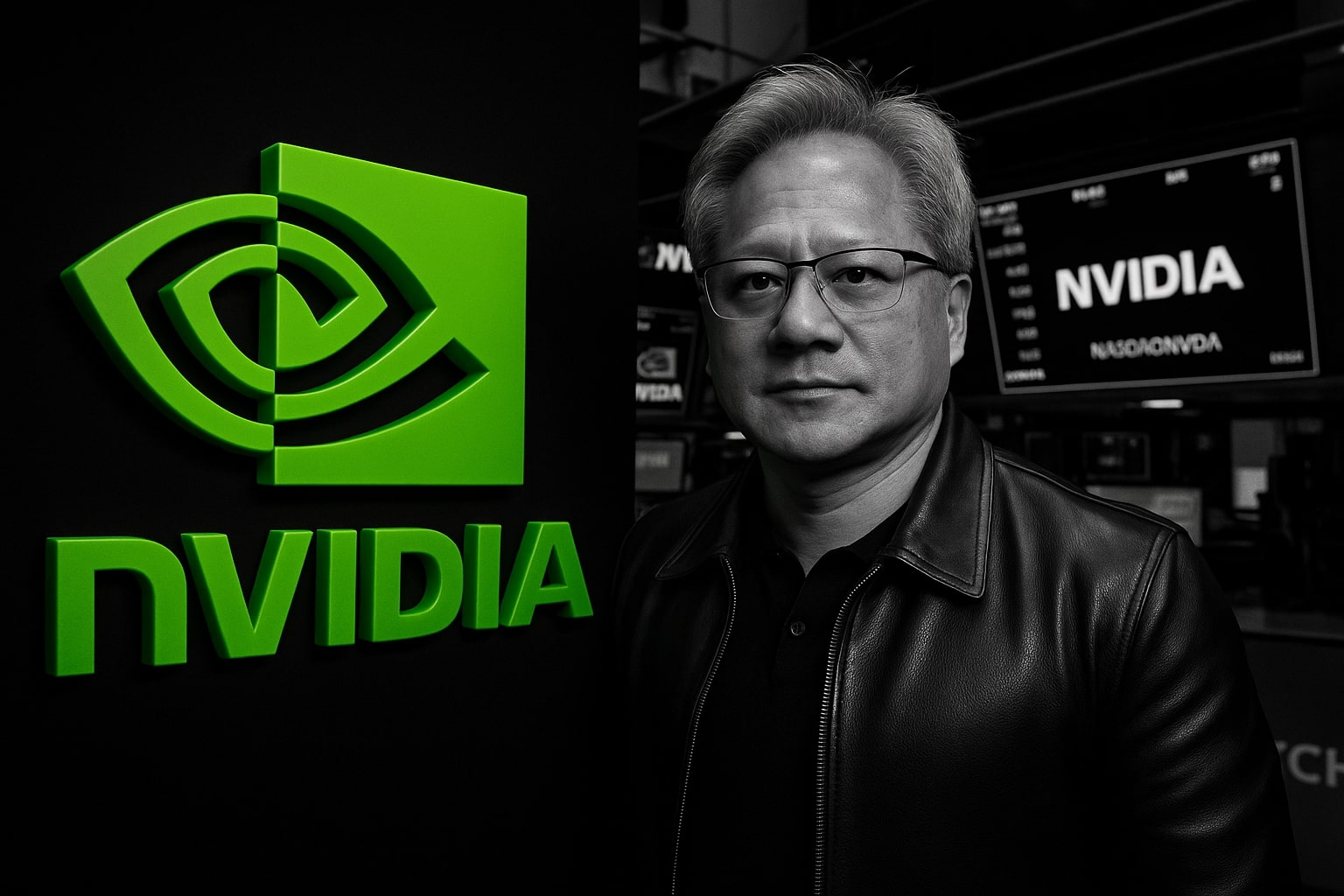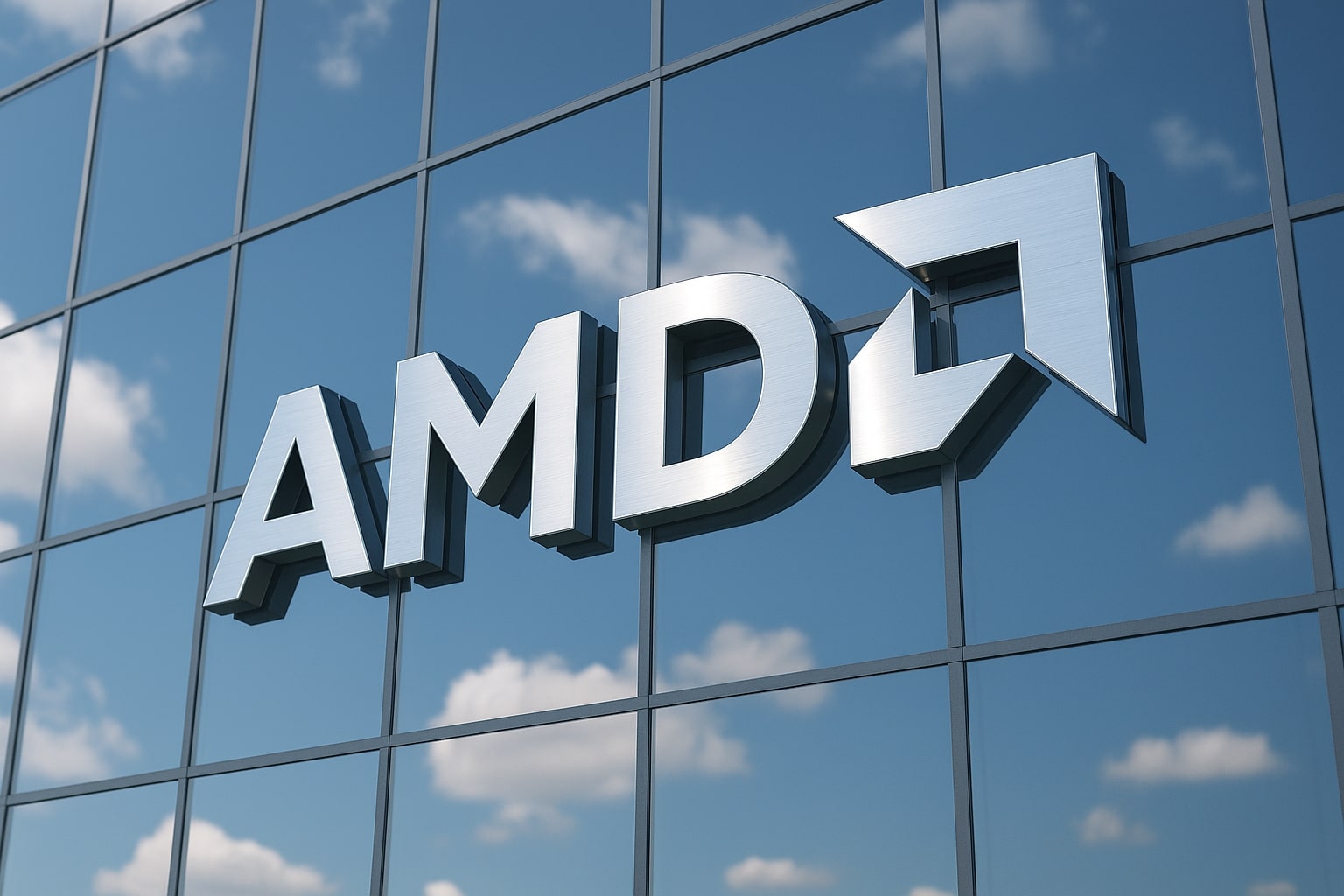
NVIDIA Stock Price Forecast - NVDA Rises to $192.57 as $350B OpenAI Expansion
AI titan NVIDIA posts 56% revenue growth to $165B, 52.4% profit margins, and $77B in cash flow as the Rubin and Blackwell Ultra GPU cycle accelerates | That's TradingNEWS
NVIDIA (NASDAQ:NVDA) Rallies to $192.57 as $4.6 Trillion AI Titan Expands $350B OpenAI Pipeline and Blackwell Ultra Ramp
NVIDIA Corporation (NASDAQ:NVDA) closed Thursday at $192.57, up 1.83%, extending a multi-week rebound that has lifted its market capitalization to $4.60 trillion—a historic valuation for a semiconductor company. The rally comes amid strong institutional accumulation, new export approvals in the Gulf region, and deepening ties with OpenAI, which now anchor over $350 billion in potential long-term revenue. Nvidia’s latest generation of AI platforms, from Blackwell Ultra to the upcoming Rubin series, cements its position as the core infrastructure provider for global artificial intelligence compute demand.
Record Financial Strength and Operational Scale
NVIDIA’s fundamentals remain unparalleled. Trailing twelve-month revenue stands at $165.22 billion, with net income of $86.6 billion, translating to an extraordinary 52.41% net margin and 109.42% return on equity. The company’s operating margin exceeds 60%, underscoring pricing power in AI hardware and networking systems. Cash reserves total $56.79 billion, against just $10.6 billion in debt, leaving NVIDIA with one of the strongest balance sheets in global tech. Levered free cash flow reached $52.44 billion, while operating cash flow hit $77 billion, providing ample funding for share buybacks, dividend continuity, and equity investments.
Q3 FY2026 Outlook and Growth Momentum
Consensus forecasts project Q3 FY2026 revenue at $54.6 billion, a 55.7% YoY increase, and EPS of $1.24, up 53% from the prior year. Management’s full-year 2026 guidance anticipates $206.4 billion in revenue and $4.5 in EPS, with 2027 revenue projected at $275 billion. Even with a forward P/E of 29.94, growth-adjusted valuation remains attractive, given a PEG ratio of 1.00—rare for a company with 71.5% YoY top-line expansion.
NVIDIA’s growth is powered primarily by its data center division, which now represents approximately 86% of total revenue, equating to $142 billion annually. The ongoing GB300 Ultra GPU rollout has accelerated hyperscaler orders, while the upcoming Rubin family—scheduled for volume production in H2 2026—will extend its product cadence into annual generational refreshes. CFO Colette Kress reaffirmed six Rubin chips already taped out, with a full NVLink-based architecture prepared for multi-gigawatt deployment.
OpenAI Partnership and the $350B Compute Opportunity
The 10 GW OpenAI deployment plan, announced in September, positions NVIDIA as both supplier and strategic investor. The firm has committed up to $100 billion in staged capital investment in OpenAI, receiving non-voting equity tranches tied to each gigawatt milestone. According to internal modeling, each gigawatt of compute equates to roughly $50 billion in total infrastructure investment, with $35 billion attributed directly to chip procurement, implying potential $350 billion in cumulative NVIDIA revenue through the late 2020s.
This agreement also aligns with the $3–$4 trillion total addressable market (TAM) for global AI infrastructure by 2030, as projected by CEO Jensen Huang. The OpenAI deal represents a multi-year revenue visibility driver—mirroring the software-style contracts traditionally reserved for cloud hyperscalers.
AMD and Intel Dynamics: Competitive and Cooperative Tension
NVIDIA’s OpenAI exposure also intersects with AMD’s concurrent 6 GW GPU supply agreement, under which OpenAI received 160 million AMD share warrants at $0.01 each, potentially worth $96 billion at full vesting. If OpenAI’s valuation reaches $1 trillion, NVIDIA’s 10% stake could indirectly capture about $9.6 billion in value from AMD’s performance through equity appreciation—an unconventional hedge within its investment framework.
Meanwhile, NVIDIA’s strategic alignment with Intel has triggered market debate. The September $5 billion equity and packaging partnership enables collaborative development on advanced chip packaging and x86 integration but stops short of moving GPU production to Intel Foundry Services. NVIDIA remains reliant on TSMC for fabrication, preserving its supply chain stability and avoiding risk tied to Intel’s process delays.
Hardware Leadership: From Blackwell to Rubin
NVIDIA’s Blackwell Ultra architecture continues to anchor data center revenue in FY2026, with rack-scale deployments exceeding 1,000 systems per week. The next-generation Rubin and Feynman GPUs, targeting late 2026 and 2027, will extend throughput by over 2.5x per watt, advancing co-packaged optics integration to reduce interconnect latency. With demand from hyperscalers like Microsoft Azure, Amazon Web Services, and Google Cloud, NVIDIA’s AI systems remain the global benchmark for compute efficiency.
Upcoming products, including Spectrum-X Ethernet fabric and InfiniBand enhancements, will deepen the company’s shift from pure hardware toward networking and optical communication revenue streams—both higher-margin and recurring.
Earnings Power and Margin Superiority
NVIDIA’s operating margins have stabilized above 60%, far surpassing peers such as AMD (43%), Broadcom (51%), and Intel (18%). This advantage derives from vertical integration: hardware, software, networking, and ecosystem control through CUDA. Free cash flow conversion remains exceptional, with FCF margins tracking net income closely—a rarity among hardware firms due to NVIDIA’s disciplined capital intensity management.
The company repurchased $22 billion in shares in FY2025, reducing outstanding shares by roughly 2% annually, and maintains a modest $0.04 annual dividend yielding 0.02%. Despite the minimal payout, the buyback engine continues to compress float while boosting EPS leverage.
Read More
-
AMD Stock Price Forecast - AMD Shares Gains on $9.2B Q3 Surge
27.11.2025 · TradingNEWS ArchiveStocks
-
XRP ETFs (NASDAQ:XRPI, NASDAQ:XRPR) Cross $644M AUM as XRP-USD Climbs to $2.18
27.11.2025 · TradingNEWS ArchiveCrypto
-
Natural Gas Price (NG=F) Rises Toward $4.60 as Cold Weather and Record LNG Exports
27.11.2025 · TradingNEWS ArchiveCommodities
-
Stock Market Today - Dow 47,427 and Nasdaq 23,214 — Fed Cut Bets Power DELL, HOOD, and URBN in Holiday Rally
27.11.2025 · TradingNEWS ArchiveMarkets
-
USD/JPY Price Forecast - (Dollar–Yen) Steadies at 156.30 as Japan’s ¥21.3 Trillion Stimulus
27.11.2025 · TradingNEWS ArchiveForex
Geopolitical and Regulatory Risk: China, UAE, and U.S. Controls
U.S. export restrictions to China have reduced annualized sales by roughly $8–$11 billion, primarily in A800 and H20 series chips. Yet management offset much of this through local licensing partnerships and the recently approved UAE export clearance, which reignites high-margin Middle Eastern demand for sovereign AI infrastructure. The company’s proactive compliance strategy mitigates policy volatility, though ongoing negotiations with Beijing remain sensitive ahead of the November 10 U.S.–China trade summit.
Valuation Context and Analyst Sentiment
At $192.57, NVIDIA trades near the midpoint of its $86.62–$195.30 52-week range. The forward P/E of 29.9x appears justified against projected EPS growth of 50.6% in FY2026 and 41.5% in FY2027, implying a PEG ratio near 0.67x—a historically undervalued zone for a growth franchise with these metrics. Cantor Fitzgerald recently lifted its price target to $300, while consensus among 52 analysts pegs the 12-month median target at $215.90.
Institutional ownership stands at 68.97%, with insiders controlling 4.32%, as detailed on TradingNews insider transactions. Short interest remains minimal at 0.9%, reflecting broad confidence. The beta of 2.12 highlights elevated volatility but amplified upside leverage during bull cycles.
AI Ecosystem Expansion and TAM Integration
Beyond GPUs, NVIDIA is building end-to-end dominance across the AI compute stack. Through its CUDA software ecosystem, it maintains near-monopoly developer lock-in, with over 5 million registered developers globally. The upcoming Rubin Ultra aims to consolidate GPU, networking, and software integration at hyperscale, enabling recurring revenue through software licensing and subscription support.
Huang’s ambition to extend NVIDIA’s role into AI networking and optics adds layers of defensibility. Co-packaged optics embedded into GPUs and switches will reduce data latency across clusters, a capability that hyperscalers cannot replicate easily.
Financial Forecast and Capital Allocation
Analyst models estimate FY2027 revenue near $275 billion, representing 33% YoY growth, with net income surpassing $120 billion. Assuming a 9% WACC and 6.5% perpetual growth rate, intrinsic value calculations place fair value between $185 and $205 per share, close to the current trading range. The enterprise value of $4.56 trillion equates to 27.6x EV/revenue and 44.1x EV/EBITDA, reflecting premium pricing justified by growth visibility.
NVIDIA’s disciplined capital allocation strategy channels excess liquidity into ecosystem investments, including OpenAI, xAI, and targeted semiconductor joint ventures. The company’s hybrid model—acting as both supplier and investor—resembles private equity-style compounding through synergistic equity exposure.
Competitive Landscape: Hyperscaler Self-Supply Emerging
While NVIDIA’s moat remains deep, hyperscaler customers like Amazon (Trainium), Google (TPU v5), and Microsoft (Maia) are gradually developing internal silicon. Gartner projects that 40% of AI workloads could shift to in-house chips by 2027, introducing medium-term risk to NVIDIA’s external GPU demand. However, given entrenched CUDA dependencies, analysts see minimal displacement before 2028.
Macroeconomic Constraints and Energy Load Risk
Each Blackwell GPU consumes roughly 1,200 watts, and aggregate hyperscaler AI data centers could account for 4–5% of global electricity usage by 2030, according to Gartner estimates. Energy infrastructure limits, particularly in the U.S. and Western Europe, may cap near-term deployment rates. Nevertheless, global sovereign cloud investments—from Japan to Saudi Arabia—should absorb part of this demand overflow, sustaining order momentum through 2026.
Verdict: Strong Buy — Structural Dominance Outweighs Valuation Risk
After integrating the OpenAI 10GW partnership, the Rubin rollout, robust free cash flow, and long-term AI TAM expansion, NVIDIA (NASDAQ:NVDA) remains a Strong Buy. Its $4.6T market cap may appear stretched, but with projected $206B revenue in FY2026 and 60%+ margins, valuation reflects justified leadership rather than speculative excess.
Export curbs and hyperscaler self-designs present headwinds, yet NVIDIA’s ecosystem entrenchment, unmatched execution, and balance sheet strength continue to dominate the AI value chain. Near-term fair value lies in the $210–$225 range, with 12–18 month upside toward $300 if Rubin production and OpenAI deployment milestones advance on schedule.
View real-time pricing and technical data for NASDAQ:NVDA on TradingNews Real-Time Chart.


















